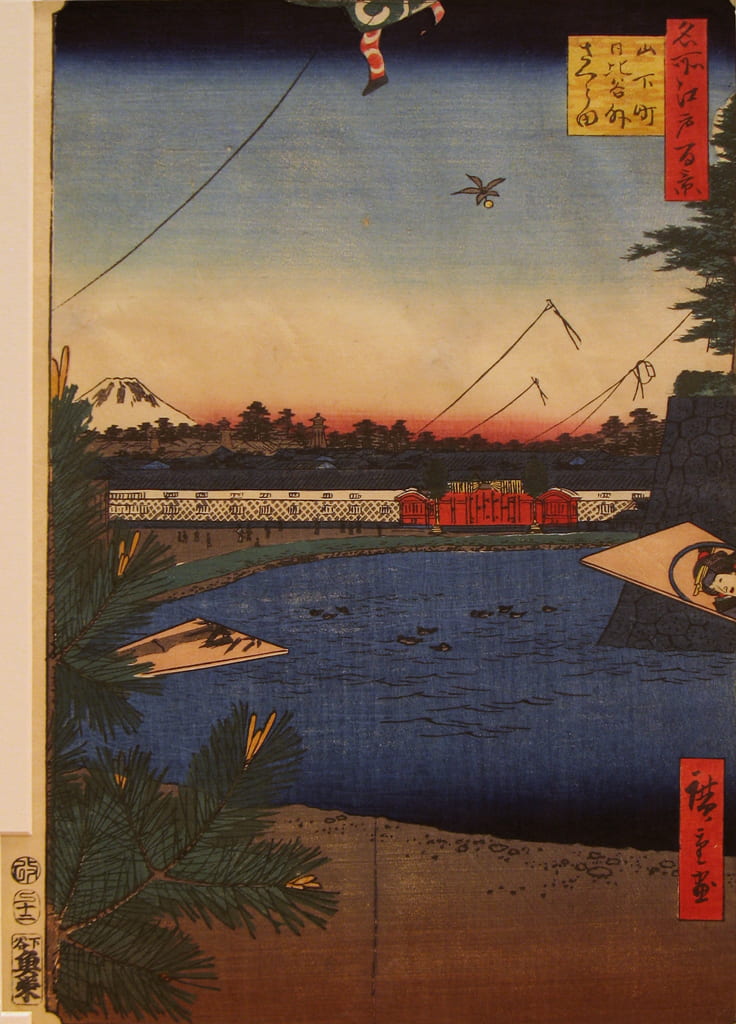James McNeill Whistler (1834–1903) admired Japanese ukiyo-e prints for their abstract sense of design. The spatial organization of his lithotint Thames No. 1—with its vertical format, high horizon line, broad areas of tone, bold asymmetries, and surface patterns that eschew linear perspective—derive from his study of Japanese prints, such as Hiroshige’s Hibiya and Soto-Sakurada from Yamashita-cho from the series One Hundred Famous Views of Edo. Japanese prints influenced Whistler to push representation beyond the rules of naturalism. While his lithotint may still be read as a view of the river Thames in London, it places greater emphasis on Japonesque relationships of line, form, and tone than traditional subject matter.
Image credits:
James McNeill Whistler (American, 1834–1903), Thames No. 1, 1896. Lithotint, 15 x 10 3/8 in. Mildred Lane Kemper Art Museum, Washington University in St. Louis. Gift of Dr. Malvern B. Clopton, 1930.
Utagawa Hiroshige (Japanese, 1797–1858), Hibiya and Soto-Sakurada from Yamashita-cho, from the series One Hundred Famous Views of Edo, 1857. Woodblock print, 14 1/4 x 9 1/2 in. Mildred Lane Kemper Art Museum, Washington University in St. Louis. Gift of Edythe Polster, 1989.

